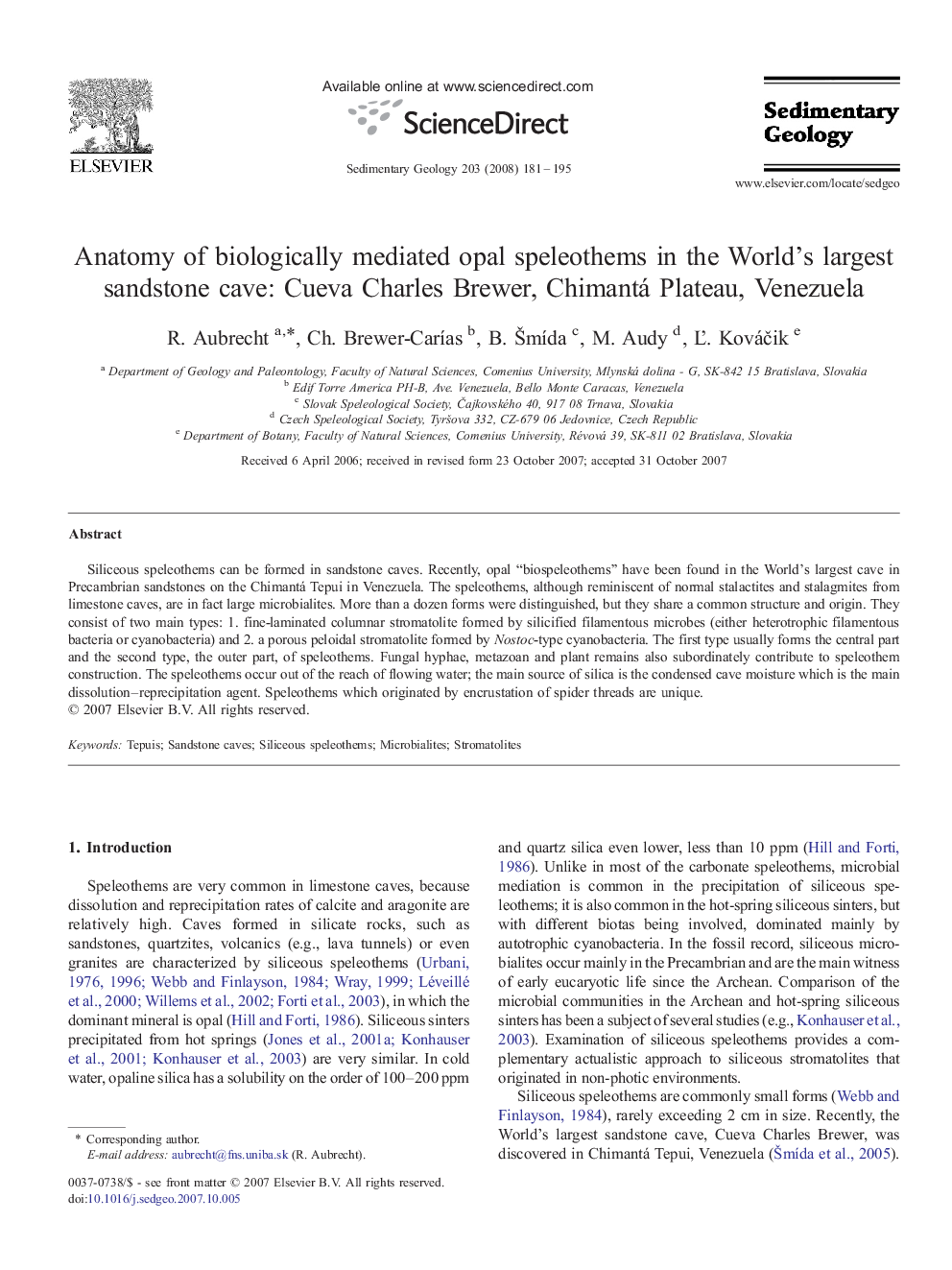| کد مقاله | کد نشریه | سال انتشار | مقاله انگلیسی | نسخه تمام متن |
|---|---|---|---|---|
| 4690560 | 1636160 | 2008 | 15 صفحه PDF | دانلود رایگان |

Siliceous speleothems can be formed in sandstone caves. Recently, opal “biospeleothems” have been found in the World's largest cave in Precambrian sandstones on the Chimantá Tepui in Venezuela. The speleothems, although reminiscent of normal stalactites and stalagmites from limestone caves, are in fact large microbialites. More than a dozen forms were distinguished, but they share a common structure and origin. They consist of two main types: 1. fine-laminated columnar stromatolite formed by silicified filamentous microbes (either heterotrophic filamentous bacteria or cyanobacteria) and 2. a porous peloidal stromatolite formed by Nostoc-type cyanobacteria. The first type usually forms the central part and the second type, the outer part, of speleothems. Fungal hyphae, metazoan and plant remains also subordinately contribute to speleothem construction. The speleothems occur out of the reach of flowing water; the main source of silica is the condensed cave moisture which is the main dissolution–reprecipitation agent. Speleothems which originated by encrustation of spider threads are unique.
Journal: Sedimentary Geology - Volume 203, Issues 3–4, 30 January 2008, Pages 181–195